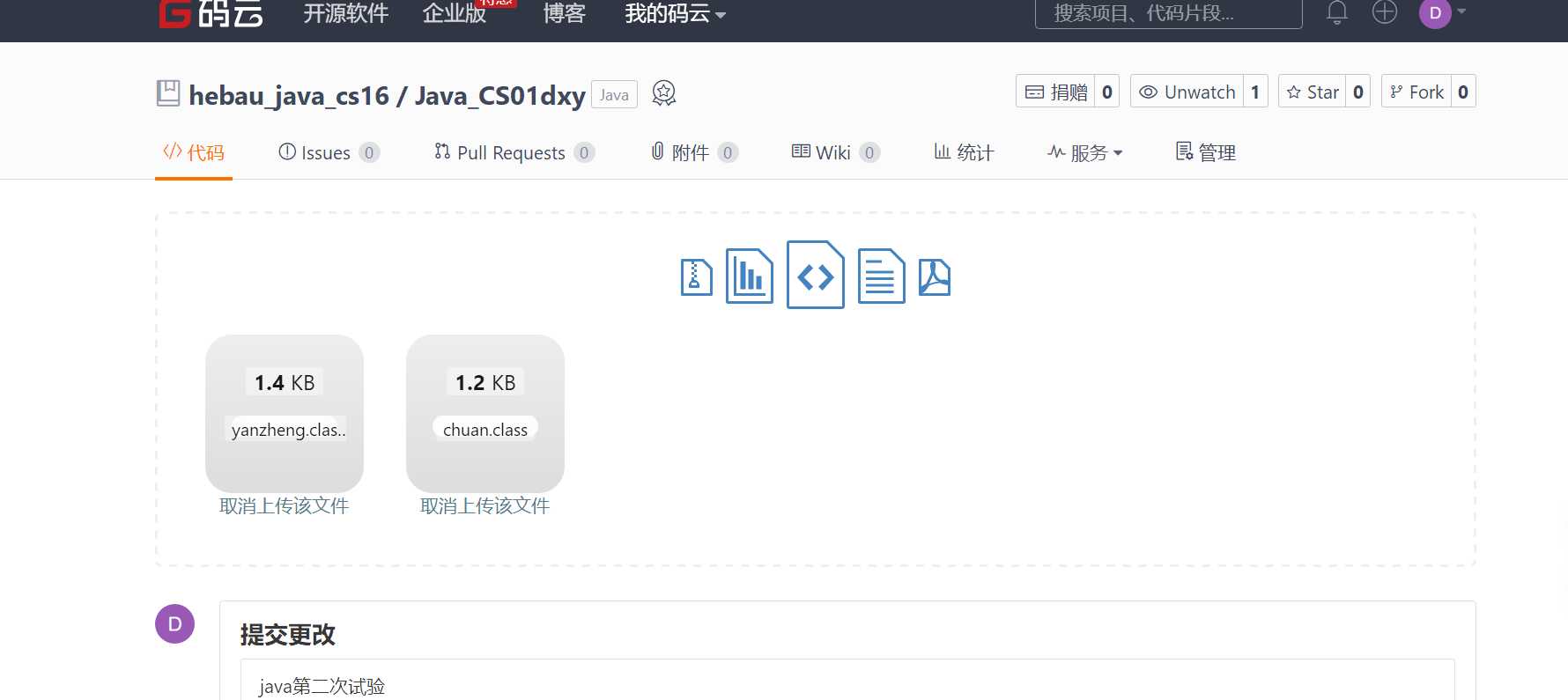1.什么是构造方法?什么是构造方法的重载?下面的程序是否可以通过编译?为什么?
~public class Test {~
public static void main(String args[]) {
Foo obj = new Foo();
}
}
class Foo{
int value;
public Foo(int intValue){
value = intValue;
}
}
不能,因为程序没有创建构造函数Foo();
有多个参数或者参数类型不同不能为重载;
如果在类中没有明确定义构造方法,系统会自动调用默认的构造方法;
2.运行下列程序,结果是什么?分析原因,应如何修改
~public class Test {~
public static void main(String[] args) {
MyClass[] arr=new MyClass[3];
arr[1].value=100;
}
}
class MyClass{
public int value=1;
}
结果:程序不能显示
原因:Myclass数组没有正常初始化,可以在 arr[1].value=100;之前加一个循环,对数组进行初始化;
3.运行下列程序,结果是什么?说明原因。
~public class Test {~
public static void main(String[] args) {
Foo obj1 = new Foo();
Foo obj2 = new Foo();
System.out.println(obj1 == obj2);
}
}
class Foo{
int value = 100;
}
结果是flase,原因:两者的地址不同;
4.什么是面向对象的封装性,Java中是如何实现封装性的?试举例说明。
封装就是将属性和方法放到一起,然后存进同一个对象中去。通过封装,可以实现对属性的数据访问限制,同时增加了程序的可维护性。
~~~public class Worker {
private int no;
private Datet bir;
private Home whome;
}
public Worker(String sname,int n,Datet s) {
this.sname=sname; this.n=n; this.s=s
}
public void setbir(Datet s){
this.s=s;
} ~~~
5.阅读下面程序,分析是否能编译通过?如果不能,说明原因。
~class A{~
private int secret = 5;
}
public class Test{
public static void main(String args[]){
A a = new A();
System.out.println(a.secret++);
}
}
不能,原因:serect在A中进行了封装,在主类函数内无法直接对secret进行操作。
6.使用类的静态变量和构造方法,可以跟踪某个类创建的对象个数。声明一个图书类,数据成员为编号,书名,书价,并拥有静态数据成员册数记录图书的总数。图书编号从1000开始,每产生一个对象,则编号自动递增(利用静态变量和构造方法实现)。下面给出测试类代码和Book类的部分代码,将代码补充完整。
~~~package Teat1;
class Book{
int bookId;
String bookName;
double price;
static int m;
// 声明静态变量
static
{
m=1000;
}
//定义静态代码块对静态变量初始化
public Book (String q,double n)
{
this.setBookName(q);
this.setPrice(n);
this.bookId=m;
m=m+1;
} //构造方法
public String getBookName() {
return bookName;
}
public void setBookName(String bookName) {
this.bookName = bookName;
}
public double getPrice() {
return price;
}
public void setPrice(double price) {
this.price = price;
}
//定义方法求图书总册数
public static int totalBook()
{
return m-1000;
}//重写toString方法
public String toString ()
{
return "编号\t"+bookId+"书名\t"+getBookName()+"价格\t"+getPrice();
} }
public class Test{
public static void main(String args[]){
Book[] books = {new Book("c语言程序设计",29.3),
new Book("数据库原理",30),
new Book("Java学习笔记",68)};
System.out.println("图书总数为:"+ Book.totalBook());
for(Book book:books){
System.out.println(book.toString());
}
} `
}~~~
7.什么是单例设计模式?它具有什么特点?用单例设计模式设计一个太阳类Sun。
一个类有且仅有一个实例,并且自行实例化向整个系统提供,实例控制:特点:灵活性好,一个类只能有一个实例,而且这个实例必须自己建立;
~~~public class A {
private static Sun p = null;
private A() {
}
public synchronized static A getp() {
if (p == null) {
p = new A();
}
return p;
}}~~~
8.理解Java参数传递机制,阅读下面的程序,运行结果是什么?说明理由。
~~~
public class Test {
String str = new String("你好 ");
char[] ch = { ‘w‘,‘o‘,‘l‘,‘l‘,‘d‘ };
public static void main(String args[]) {
Test test = new Test();
test.change(test.str, test.ch);
System.out.print(test.str);
System.out.print(test.ch);
}
public void change(String str, char ch[]) {
str = "hello";
ch[0] = ‘W‘;
}
}
~~~
结果是你好 world
change方法里面的str是新开辟的空间指向你好,但是test里面的是不可变的。
总结:
1、掌握构造方法的重载
2、String类 的一些常用

